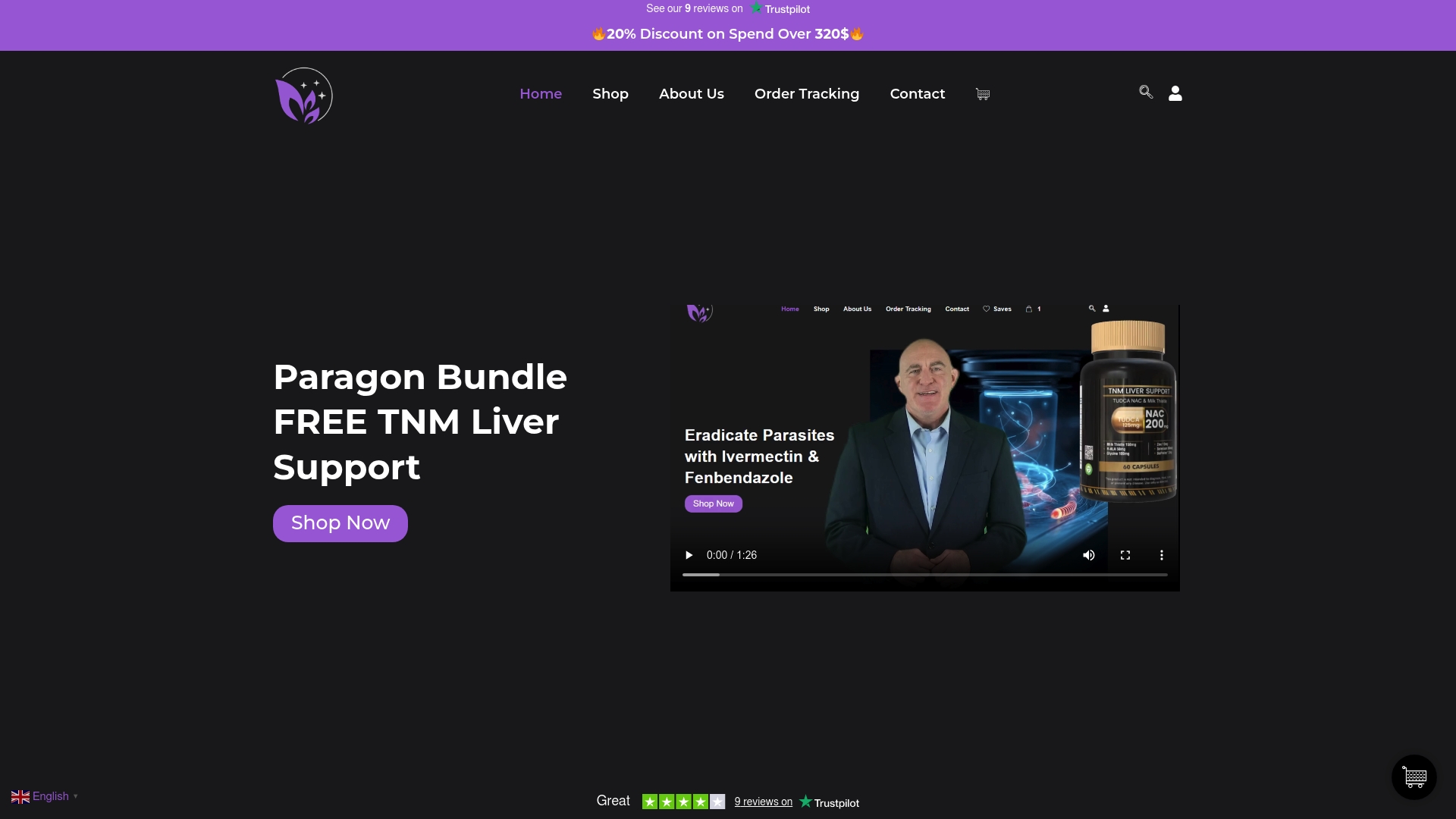Liver detoxification sounds complicated, but it is actually the central process that keeps your body safe from countless toxins every single day. Most people are surprised to learn that the liver processes and eliminates more than 99 percent of potential toxins and metabolic waste before these can harm other organs. Trendy detox diets promise a reset but they barely scratch the surface of what your liver does nonstop—because this organ is already working far harder than any juice cleanse ever could.
Table of Contents
- What Is The Liver Detoxification Process?
- Why Does Liver Detoxification Matter For Health?
- How The Liver Detoxification Process Works
- Key Concepts In Liver Detoxification
- Common Misconceptions About Liver Detoxification
Quick Summary
| Takeaway | Explanation |
|---|---|
| The liver detoxifies through two phases. | Phase I modifies toxins, while Phase II makes them water-soluble for elimination. |
| Impaired liver function increases health risks. | Ineffective detoxification can lead to chronic inflammation, metabolic disorders, and immune deficiencies. |
| Extreme detox diets are largely ineffective. | The liver operates continuously; no special diets or cleanses are needed for optimal function. |
| Balanced nutrition supports liver health. | A healthy diet and hydration are essential for the liver to maintain its detoxification capabilities. |
| Regular medical guidance is vital for liver health. | Consulting healthcare professionals is crucial for addressing any liver function concerns or disorders. |
What is the Liver Detoxification Process?
The liver detoxification process represents a sophisticated biological mechanism that transforms potentially harmful substances into less toxic compounds that can be safely eliminated from the body. This intricate system serves as the human body’s primary defense mechanism against environmental toxins, metabolic waste products, and potentially dangerous chemical compounds.
The Core Mechanism of Liver Detoxification
At its fundamental level, the liver detoxification process operates through two critical enzymatic phases that work synergistically to neutralize and remove toxic substances. According to research from the National Center for Biotechnology Information, these phases involve complex biochemical transformations that protect cellular integrity and maintain overall metabolic health.
Phase I Transformation
In the initial phase, cytochrome P450 enzymes perform oxidation, reduction, and hydrolysis reactions. These enzymes modify toxic compounds by adding reactive groups, making them more water-soluble and preparing them for further processing. This initial transformation can sometimes create intermediate metabolites that are potentially more reactive than the original substance.
To clarify the two core stages of liver detoxification described in the article, the table below summarizes the main differences between Phase I and Phase II, including the enzymes involved, types of reactions, and outcomes.
| Phase | Enzymes Involved | Main Reactions | Outcome |
|---|---|---|---|
| Phase I | Cytochrome P450 | Oxidation, reduction, hydrolysis | Modifies toxins, increases reactivity, preps for Phase II |
| Phase II | Conjugation enzymes | Glucuronidation, sulfation, glutathione conjugation, acetylation, methylation | Makes toxins water-soluble, neutralizes, enables elimination |
Phase II Conjugation
The second phase involves conjugation reactions where specialized enzymes attach specific molecules to the modified toxins. This process makes the compounds even more water-soluble and less harmful, facilitating their safe elimination through urine or bile.
Key conjugation pathways include glucuronidation, sulfation, and glutathione conjugation.
Significance of the Liver Detoxification Process
The liver detoxification process is crucial for maintaining overall health and preventing the accumulation of harmful substances. By continuously filtering and transforming toxins, the liver protects other organ systems from potential damage. Our comprehensive guide on holistic detox provides additional insights into supporting this critical bodily function.
Key functions of the liver detoxification process include:
- Neutralizing environmental toxins
- Metabolizing medications and alcohol
- Processing hormones and metabolic waste products
- Protecting cellular structures from oxidative stress
Understanding this complex biological mechanism highlights the liver’s remarkable capacity to maintain our body’s internal balance and protect us from potentially harmful substances.
Why does Liver Detoxification Matter for Health?
Liver detoxification represents a critical biological process that extends far beyond simple toxin removal, playing a fundamental role in maintaining comprehensive human health and preventing numerous systemic disorders. By efficiently processing and eliminating potentially harmful substances, the liver acts as a sophisticated biological filtration system that protects the entire body from accumulated toxins and metabolic waste.
The Health Protection Mechanism
The liver’s detoxification process serves as a comprehensive defense mechanism against various health threats. According to research from the National Institutes of Health, compromised liver function can significantly increase an individual’s vulnerability to chronic diseases, metabolic disorders, and systemic inflammation.
Metabolic Balance and Immune Function
A well-functioning liver detoxification system maintains critical metabolic balance by processing endogenous and exogenous substances. This process helps regulate hormone levels, manage inflammatory responses, and support immune system efficiency. When the liver operates optimally, it neutralizes potential threats before they can cause systemic damage.
Consequences of Impaired Liver Detoxification
When liver detoxification mechanisms become compromised, the body experiences a cascade of potential health challenges. Accumulated toxins can lead to oxidative stress, cellular damage, and increased inflammation. Our comprehensive guide on holistic detox explores strategies for supporting liver health and maintaining optimal detoxification capacity.
Potential health risks associated with impaired liver detoxification include:
- Increased susceptibility to chronic inflammatory conditions
- Compromised immune system response
- Higher risk of metabolic disorders
- Potential neurological and hormonal imbalances
- Reduced ability to process medications effectively
Key protective functions of effective liver detoxification encompass:
- Neutralizing environmental toxins
- Metabolizing potentially harmful chemical compounds
- Supporting overall cellular health
- Preventing toxin accumulation in other organ systems
Understanding the liver’s role in detoxification underscores its importance as a central guardian of human health, continuously working to maintain our body’s delicate internal equilibrium.
How the Liver Detoxification Process Works
The liver detoxification process operates through a sophisticated, multi-stage molecular mechanism designed to transform potentially harmful substances into safely eliminable compounds. This intricate biological system represents a complex network of enzymatic reactions that continuously protect the body from toxic accumulation and metabolic disruption.
Molecular Transformation Stages
Liver detoxification functions through two primary interconnected phases that work synergistically to neutralize and remove potentially dangerous substances. According to research from the National Institutes of Health, these phases involve specialized enzymatic pathways that convert lipophilic compounds into water-soluble metabolites for efficient elimination.
Phase I: Initial Chemical Modification
In the first stage, cytochrome P450 enzymes perform critical oxidation, reduction, and hydrolysis reactions. These enzymes introduce reactive functional groups to toxic molecules, increasing their polarity and preparing them for further processing. This initial transformation can sometimes generate intermediate metabolites that are potentially more reactive than the original substance, requiring immediate further processing.
Phase II: Conjugation and Neutralization
The second phase involves conjugation reactions where specialized enzymes attach specific molecular groups to the modified toxins. These conjugation processes make compounds significantly more water-soluble and less harmful, facilitating their safe elimination through urine or bile. Our comprehensive guide on holistic detox provides deeper insights into these complex biochemical mechanisms.
Key enzymatic processes in Phase II conjugation include:
- Glucuronidation
- Sulfation
- Glutathione conjugation
- Acetylation
- Methylation
Important molecular mechanisms supporting liver detoxification include:
- Neutralizing reactive oxygen species
- Reducing cellular oxidative stress
- Preventing toxin reabsorption
- Supporting immune system responses
- Maintaining metabolic homeostasis
The liver’s remarkable ability to continuously adapt and transform potentially harmful substances highlights its critical role as the body’s primary defense mechanism against environmental and metabolic toxins.
Key Concepts in Liver Detoxification
Liver detoxification represents a complex biochemical process that extends beyond simple toxin removal, encompassing intricate molecular mechanisms that protect the body from potential metabolic disruptions. Understanding the fundamental principles underlying this sophisticated system provides insights into how the human body maintains internal balance and defends against environmental challenges.
Fundamental Biochemical Principles
The liver operates as a sophisticated biochemical processing center, continuously adapting to neutralize and eliminate potentially harmful substances. According to research from Johns Hopkins Medicine, the liver performs multiple critical functions that go far beyond traditional detoxification.
Enzymatic Transformation Mechanisms
At the core of liver detoxification are specialized enzymatic systems that transform lipophilic compounds into water-soluble metabolites. These molecular processes involve intricate chemical modifications that render toxic substances less harmful and more easily eliminable through biological pathways.
![]()
Critical Biological Defense Strategies
The liver employs multiple sophisticated strategies to protect the body from potential chemical threats. Our comprehensive guide on holistic detox explores these nuanced mechanisms in greater depth.
Key principles of liver detoxification include:
- Converting fat-soluble toxins into water-soluble compounds
- Neutralizing potentially harmful metabolic byproducts
- Supporting immune system functionality
- Regulating metabolic homeostasis
- Managing oxidative stress responses
Primary molecular mechanisms supporting liver detoxification comprise:
- Glutathione conjugation processes
- Cytochrome P450 enzyme reactions
- Methylation transformation pathways
- Sulfation biochemical conversions
- Acetylation molecular modifications
Understanding these key concepts reveals the liver’s remarkable capacity to continuously adapt and protect the body from potentially harmful substances through intricate biochemical processes.

Common Misconceptions about Liver Detoxification
Liver detoxification has become a subject of widespread misunderstanding, with numerous myths and pseudoscientific claims clouding public perception about how this essential biological process actually functions. Separating scientific fact from popular misconception is crucial for developing a genuine understanding of liver health and metabolic processes.
Popular Detoxification Myths
Many individuals believe that specialized diets, supplements, or extreme cleansing protocols can dramatically enhance liver function. According to research in the Journal of Human Nutrition and Dietetics, most commercial detox programs fundamentally misrepresent how the liver actually works.
The Self-Cleaning Organ Concept
Contrary to popular belief, the liver does not require external “cleansing” or dramatic interventions. This sophisticated organ continuously performs complex detoxification processes without requiring specialized external protocols. The liver’s enzymatic systems are designed to efficiently neutralize and eliminate toxins through intricate biochemical mechanisms.
Scientific Reality versus Popular Claims
Detox marketing often promotes quick fixes and miraculous solutions that have no scientific basis. Our comprehensive guide on holistic detox provides evidence-based insights into supporting liver function.
Common misconceptions about liver detoxification include:
- Believing extreme juice cleanses can rapidly detoxify the body
- Assuming all detox supplements are scientifically validated
- Thinking the liver can be “shocked” into better performance
- Expecting immediate results from short-term interventions
- Believing commercial detox products are universally effective
Key scientific perspectives on liver detoxification:
- The liver is a continuous, self-regulating detoxification system
- Balanced nutrition supports natural liver function
- Hydration and consistent healthy habits matter more than quick fixes
- Individual metabolic variations influence detoxification efficiency
- Professional medical guidance is crucial for addressing liver health
Understanding these misconceptions helps individuals develop more realistic, scientifically grounded approaches to supporting their liver’s natural detoxification processes.
The following table dispels popular myths versus the scientific realities of liver detoxification as described in the article, helping readers distinguish between marketing claims and established biological facts.
| Common Myth | Scientific Reality |
|---|---|
| Juice cleanses rapidly detoxify the liver | The liver works continuously; no cleanse is needed for proper function |
| Detox supplements are all scientifically proven | Most lack proven efficacy and are unnecessary for healthy liver function |
| The liver can be shocked into better performance | The liver is a self-regulating organ; no dramatic intervention required |
| Results from a detox are immediate and dramatic | Real improvements result from long-term healthy habits and nutrition |
| All commercial detox products are effective | Very few have scientific backing; most are ineffective or unnecessary |
Take Charge of Your Liver Health with Proven Support
When you learn about the liver detoxification process and its importance for overall wellness, it is clear that proper support can make all the difference. Many people struggle with toxin buildup, sluggish metabolic function, and the myths surrounding extreme detox methods. The reality is, your liver needs the right nutrients and scientifically backed solutions to maintain its natural defense systems and prevent toxin overload.

Why wait to give your liver the care it deserves? Discover our carefully formulated liver support supplements and holistic detox solutions designed to reinforce your body’s natural detoxification pathways. Explore pharmaceutical-grade options like TUDCA, NAC, and herbal liver complexes, all detailed with transparency and backed by real customer results. Visit https://mahoneyinter.com now to find out how easy it is to start supporting your liver naturally. Take the next step to total wellness and shop our trusted products today.
Frequently Asked Questions
What is the liver detoxification process?
The liver detoxification process involves a sophisticated mechanism that transforms harmful substances into less toxic compounds for safe elimination from the body, primarily through two phases of enzymatic reactions.
How does Phase I and Phase II of detoxification work in the liver?
Phase I involves modifications of toxins by cytochrome P450 enzymes through oxidation, reduction, and hydrolysis, while Phase II involves conjugation reactions that further make these modified toxins water-soluble for easier elimination.
Why is liver detoxification important for overall health?
Liver detoxification is crucial for preventing the accumulation of harmful substances, maintaining metabolic balance, regulating hormones,. and supporting immune function, thus protecting against chronic diseases and systemic inflammation.
What common misconceptions exist about liver detoxification?
Many misconceptions include the belief that extreme diets or supplements are necessary for liver health, or that the liver requires external cleansing. In reality, the liver is a self-regulating system that efficiently detoxifies harmful substances without specialized interventions.





